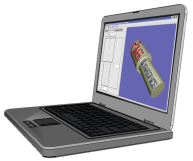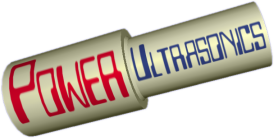A new online ultrasonics components store has just opened at www.UltrasonicsWorld.com. Check their amazing prices for replacement ultrasonics components, fully compatible with the major manufacturers' originals at a fraction of the cost.
You are here
Ultrasonic Chocolate
Hello Dr. Chris Cheers, or whomsoever else would care to comment on my culinary quandaries.
I am a chef and somewhat new to the world of ultrasonics. I am interested in the feasibility of using a sonicator as part of the chocolate making process. From what I have read thus far it seems as though ultrasonics may be able to facilitate in many aspects of chocolate production. But, to begin this discussion I would like to talk about the possibility of ultrasonic milling on a small scale.
As chocolate production is practiced now, the nibs (the inner “meat” of the cocoa bean) are ground (like coffee beans except much much finer) and transformed into a dark liquid known as cocoa liquor (cocoa liquor is comprised of 50% cocoa solids and 50% cocoa butter). The grinding of the nibs does two things:
1.
It breaks open the bean cells to release the cocoa butter and
2.
Breaks those cell particles down so they are imperceptible to the tongue as “gritty”.
The final particle size needs to be between 15-30 microns. in order for the finished chocolate product to have that familiar velvety mouth feel.
So, my question is, if I do an initial grinding of nibs and transform them into a chocolate liquid that has the approximate viscosity of motor oil with cocoa solids suspended in the liquid – do you think that a sonicator could break apart those cocoa solids to 15-30 microns?
I would be happy to provide more chocolate making details if necessary. For purposes of experimentation I have a sonicator XL 2020 with a ½” flat tip.
Thank you for your time.
Regards
Matt.


Re: Ultrasonic Chocolate
Mmm, chocolate!
Hello Matt, welcome to the forum (and sorry for the delayed reply)
When looking at possible new applications I like to start with the physics of the current process and how it might change with ultrasonics. Thinking about a coffee grinder (the closest thing in my personal experience) a whole coffee bean hit by a blade will be cut while a tiny particle will more likely bounce off, because of its lower mass. So I suspect that the particle size would be dependent on the preipheral speed of the blades - as they move faster they will be able to cut smaller particles.
Unfortunately the speed of motion in ultrasonic devices is relatively low (tiny movement, modest speed, enormous acceleration) so I don't really see ultrasonics enhancing the conventional mechanism.
Instead, let's move on to a different mechanism - cavitation (I guess you were already thinking that way since you mention a liquid medium). There might be something in that - cavitation can do some amazing things - but I suspect in this case once again the small particles might just move around instead of breaking down. However it's easy enough to try - I'd suggest starting with a small sample and a probe with a small diameter tip to achieve maximum possible intensity.
One final thought - if the reason for the limit on particle size is that smaller particles can bounce off the blades then perhaps we should find a way to prevent them doing this - ie. provide an anvil. So then you'd be looking at a larger diameter sonotrode (perhaps the 1/2" one you already have) with a very smooth flat tip working against a solid flat surface. This would be much harder to set up, particularly pumping the liquid through the gap, but intuitively it seems like a more direct way to crush those particles...
Hope that gives you some food for thought and that you'll come back with more ideas, questions and perhaps even experimental results.
Regards
Chris
Re: Ultrasonic Chocolate
Hello again,
Sorry about the delay in my reply, there are simply not enough hours in the day.
I have been running some experiments with ultrasonic cavitation to reduce cocoa particle size using a ½” sonotrode. Unfortunately, thus far I have met with little success.
It seems as though, as you suggested, the particles are just moving around instead of breaking down.
My procedure has been this: 1) Pre-grind the nibs with low heat to release the cocoa butter and turn the mixture into a liquid. 2) Place the liquid cocoa or chocolate liquor (about 200 ml or 1 cup.) into a vile and sonicate at 20KHz.
You mentioned in your previous posting “pumping the liquid through the gap…”. I have been trying to cavitate while the chocolate liquor is standing still. Should a liquid be moving in order for cavitation to take place?
Another problem I have encountered is viscosity. Chocolate is in its least viscose state when it is warm, yet too warm and the chocolate will burn. I have in my experiments burned some samples. If you had any comments or suggestions on how to approach this viscosity problem I would love to hear them. A side note on the burnt chocolate I have produced is that it does not taste like chocolate I have burned in the kitchen when not paying enough attention. I thought this might have something to do with sonochemestry, as chocolate is quite the chemically complex substance. Is there any way to predict what volatiles will be effected and how? From the little I have read on the subject of sonochemestry, it seems as though trail and error is the only answer, as it is such a burgeoning field.
Another quick thought on that anvil idea you mentioned. Do you think that two sonotrodes running in the same sample would facilitate cavitation?
Thank you again for your time and the food for thought.
Regards.
Matt
Re: Ultrasonic Chocolate
Sorry Matt, I should have explained myself better. Really I was talking about two options:
1. Straight cavitation (what you're doing now).
In this case you'd need a lot of amplitude / intensity - a fine-tip probe will give you more amplitude than your 1/2" one but perhaps it still wouldn't be enough...
Also your point about sonochemical changes is a valid one, and any such changes would be more likely / more pronounced at higher intensity. For more information on this you really need a sonochemistry specialist (and still probably trial-and-error!).
2. Crushing action with the sonotrode working against an anvil (ie. any solid flat surface).
This is entirely my speculation but intuitively seems like it could be a way to break down the particles using lower amplitude so with less chance of other chemical changes. However if you line up your probe close to a flat surface with a small gap containing liquid and turn on the ultrasonics I think you'll find that the liquid will be squeezed out rather rapidly! So then you need some way to move unprocessed liquid into the gap - hence my earlier random thoughts about pumping liquid through the gap.
Something rather similar happens in a through-flow processing unit (products like the "Flocell") but normally with a significantly larger gap for the liquid to flow through. With such a small gap you would probably need very high pressure to achieve any useful flow rate, but perhaps for such a high-value product such processing could still be viable.
Two probes placed boxer-fashion could also also help but would give you significant extra practical problems pumping the liquid, since you'd probably need to pump through one of the sonotrodes. Otherwise I wouldn't expect much benefit from using two probes except for increased volume / reduced processing time.
Hope that makes my random thoughts a little more understandable (whether they're practical of course is another story altogether!). Please let me know how your trials go.
Regards
Chris